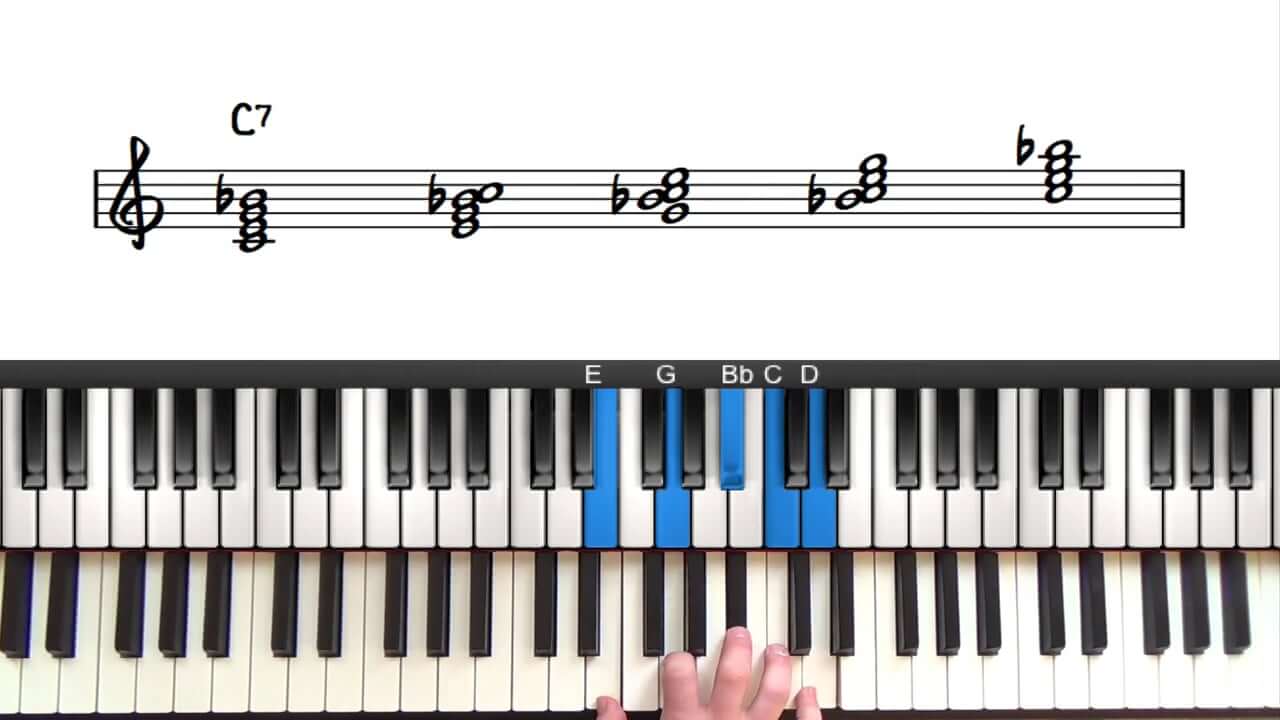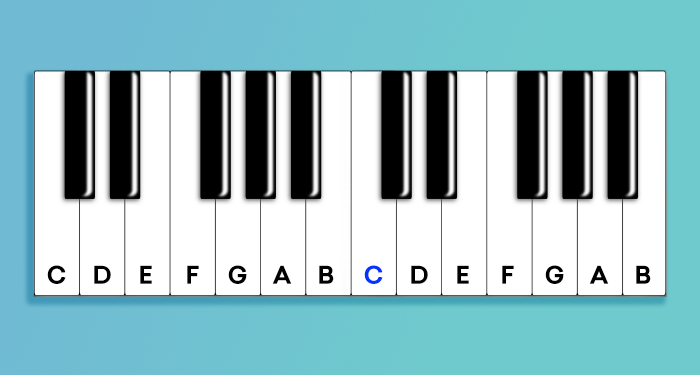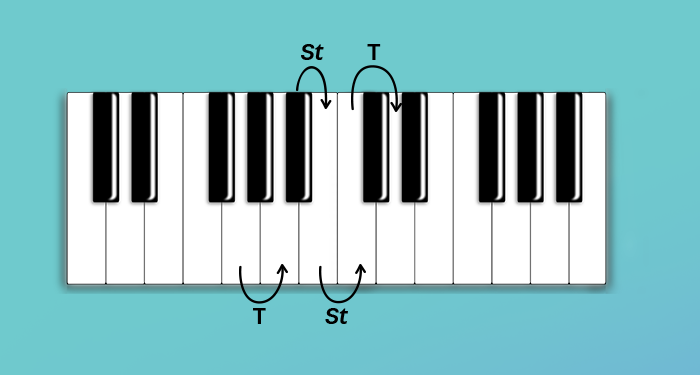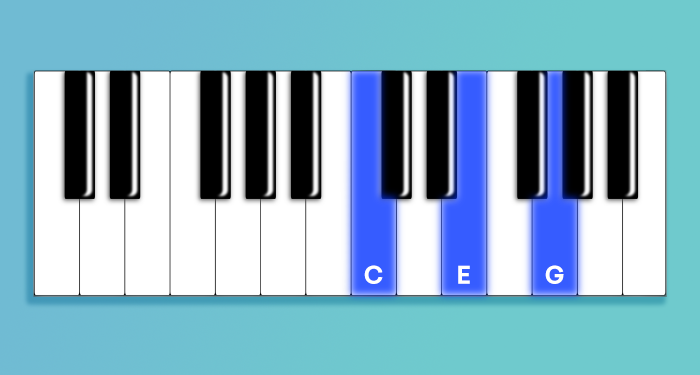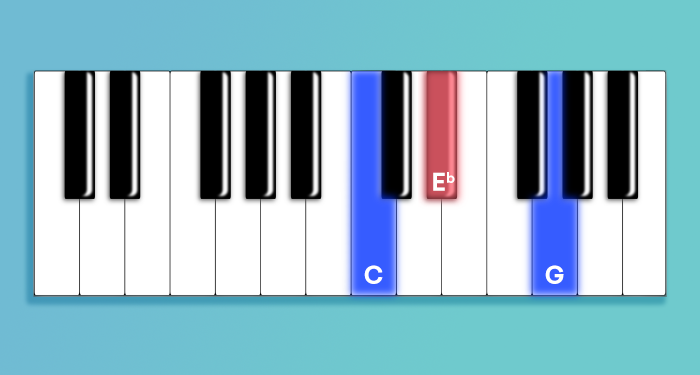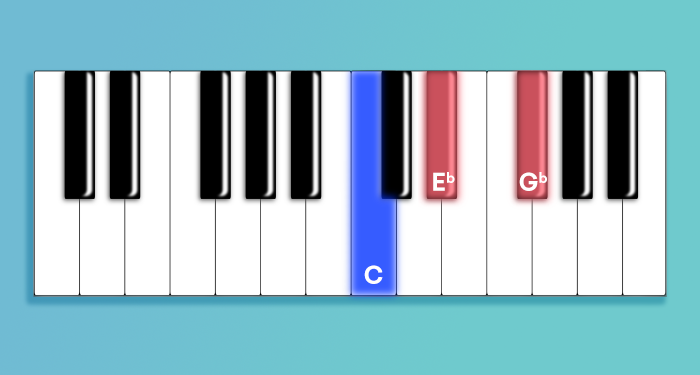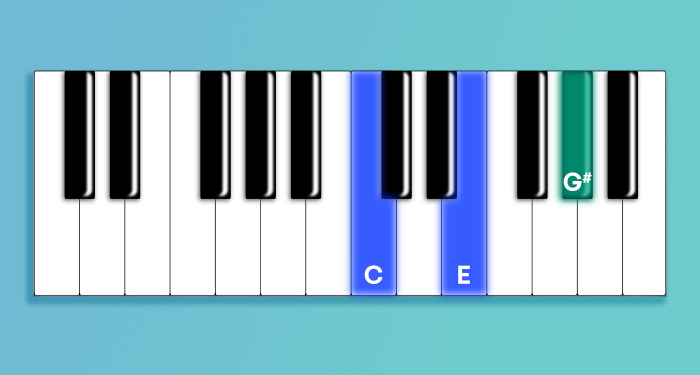Basic music theory is necessary for all musicians!
However, the fact is, many fail to put the right amount of effort and time into the basics (but not you right? Great).
Devoting even a small amount of power towards a few basic music theory ideas will pay off in large methods for your songwriting.
However, what are the most important music theory concepts every musician need to know?
One of the most important skills is building chords… Chord-building is a music theory staple with the power to transform the way you hear, understand and write music.
Even when you already know how to build chords, a quick refresher will always assist to sharpen your skills.
In this article, you will learn how to build four common chord types on any root note in music by memorizing easy patterns of notes. To get the most out of this tutorial, play along with your instrument of choice.
If that isn’t available to you, follow along with this helpful printable piano visual:
Let’s get began?
What are chords in music?
Chords are 2 or more harmonic notes played at the same time. Most basic chords are built utilizing 3 notes. Chords are built on their root note (the beginning note). The rest of the notes in a chord are decided by the chord quality.
Chords could be built with dozens of notes, although the result would probably be a huge dissonant mess that would not be helpful for anything other than experimental music.
To better understand how chords work in your music, think of your track like a building. Your chords are the foundation.
Listeners will not always recognize chords in a music, however, they provide the shape and space to help a melody. Chords could be played by anything from a guitar to a brass quintet.
Building chords and chord progressions are easy when you understand the basics. However, to build chords, you should know what intervals are first…
What are intervals in music?
Intervals are the note-to-note relationships we hear in music. Chords are simply varying combinations of intervals.
As you will soon learn, even the slightest change of a chord’s intervals leads to large changes.
To know intervals in chords, you should plug in a particular number of semitones. Semitones are the distance between one note and the one directly above it.
On the guitar, a semitone is represented by one fret. On piano tones and semitones look like this:
Now that you know the difference between tones and semitones, it’s time to build some chords.
Chord types: How to build four basic chords
These four basic chord types, or chord qualities, are built utilizing 3 notes.
First, to make things simple, I will show you the way to build those chords in the key of C—However, when you know chords in the key of C, you will need build chords in other keys to fully grasp chord-building.
Keep in mind, it’s necessary to master the basics before moving on to more complex material like including extra intervals to basic chords to transform them into extended chords, however, I’m getting ahead of myself!
The four basic chord types are:
Major Chords
Major chords sound full, resolved and complete. All the things from Tom Petty’s “Free Fallin’” to the “Happy Birthday” track are built from easy progressions of major chords.
Major chords are built by including the intervals of a major third and perfect fifth above the root. The root, by the way, is the beginning note of the chord (in this example our root is C).
The major third interval is the distance between the root and the note 4 semitones above it. Since C is our root, E is the note a major third above.
For the third note, the perfect fifth is 7 semitones above the root. So in our instance, this would be the distance between C and G. Put all this together, and you will get a C major chord.
Major Third= 4 semitones (C to E)
Perfect Fifth= Seven semitones (C to G)
Minor Chords
Here is the great news. When you have understood everything up to this point, you will be capable of master the rest of the basic chords with ease.
Minor chords sound a universe away from the cheery, resolved nature of major chords, however, there is only one note of the difference. Most people think those chords sound morose and pensive, although they are used to convey all chord types of different emotions in music.
Minor chords are built by including a minor third (three semitones) and perfect fifth above the root.
Minor Third: Three semitones
Perfect Fifth: Seven semitones
Diminished Chords
Diminished chords will add a tense, dissonant sound to your music.
Diminished chords are built by including a minor third and tritone above the root. A tritone is comprised of six semitones.
Minor Third: 3 semitones
Tritone: 6 semitones
Augmented Chords
Augmented chords sound odd and unsettling such as something from the soundtrack of a science fiction film.
Out of all the basic chords, the augmented is the most hardly ever heard in music. Augmented chords are built similar to easy major chords, however, with an added raised fifth.
The C major chord functions the notes C, E and G, so the augmented C chord functions C, E and G#.
Major Third: 4 semitones
Raised Fifth (minor sixth): 8 semitones
When you have nailed down building basic chords in the key of C, begin building chords in other keys too.
Also, and that is super essential, begin applying your chord-building knowledge to your unique instrument. In case your main instrument is something that only produces one pitch at a time, then arpeggiate the notes (play each of the chord’s notes individually in order).
The beauty of simple music theory is that it applies to all pitch-producing tools. However, it only works in case you work at applying it to your tools and workflow.
Chord Progressions
Now that you understand what chords are, let’s talk about how to use chords in your music. Chord progressions are any series of 2 or more chords in a piece of music. Relying on the style of music, chord progressions could be easy and repetitive or lengthy and complicated.
When you are totally new to creating music with chords, the 12-bar blues is a superb chord progression to start with.
Going back to the instance of C major, an easy 12-bar blues progression could be built utilizing C, F and G major chords. Just add 4 beats to each chord symbol:
12-Bar Blues in C Major:
C-C-C-C
F-F-C-C
G-F-C-C
Keep in mind, chord progressions should not be long or complicated. In fact, it takes real songwriting talent to make a track with simply two chords fascinating. Attempt experimenting with some easy chord progressions and see if you could make it work!
Building better songs with chords
Learning how to build chords might seem tough at first, however, like learning your instrument, it gets simpler over time with practice.
Practice your chords and build them in several keys. And the next time you listen to music, attempt actively listening for the chords and progressions and take a mental note of them.
With enough work, understanding how to play, understand and build basic chords will soon be second nature in your own songwriting.

